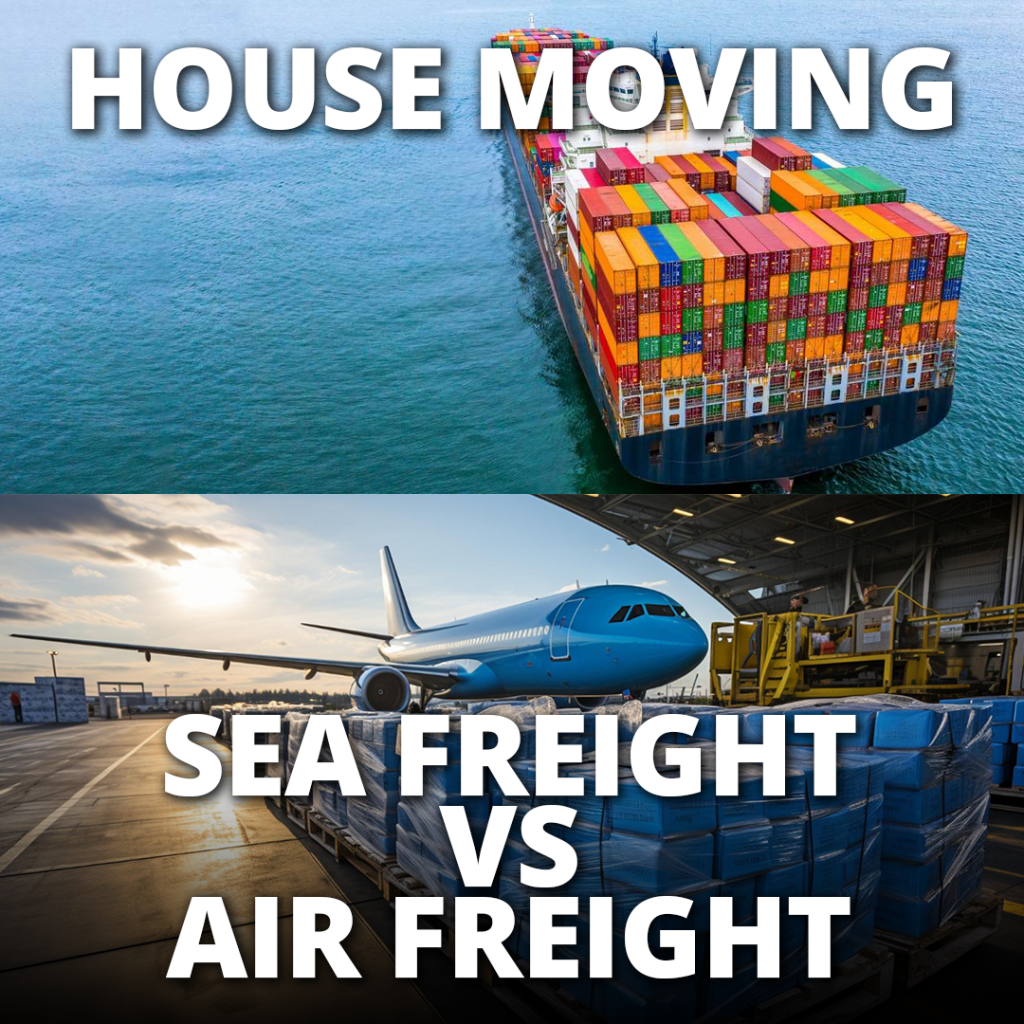
When planning a house move, one of the critical decisions to make is how your belongings will reach their new destination: through sea freight or air freight. Each method offers unique advantages and considerations that can significantly impact your moving experience. Whether you prioritize cost-effectiveness and the ability to transport large volumes over longer periods or prioritize speed and security for urgent deliveries, understanding the differences between sea and air freight is essential. Let’s explore the factors to consider when deciding between sea freight and air freight for your upcoming move.
Sea Freight:
Cost-Effectiveness: Sea freight is generally more cost-effective for transporting larger volumes of household goods over long distances compared to air freight.
Suitability for Bulkier Items: It is ideal for transporting bulky items such as furniture, large appliances, and vehicles that may not be suitable for air transport due to size or weight restrictions.
Longer Transit Times: Sea freight typically has longer transit times compared to air freight, especially for international moves. This longer duration should be considered in your moving timeline.
Environmental Impact: Generally considered to have a lower environmental impact per unit of cargo transported compared to air freight, due to lower fuel consumption per ton of cargo.
Port Handling and Customs: Involves procedures for port handling, including customs clearance, which can vary in complexity depending on the countries involved.
Air Freight:
Speed of Delivery: Air freight is significantly faster than sea freight, making it ideal for urgent moves or when you need your belongings to arrive quickly at your destination.
Security and Safety: Air freight often offers higher security and safety standards for valuable or fragile items due to reduced handling and shorter transit times.
Cost Considerations: Generally more expensive per unit of weight compared to sea freight, especially for larger volumes of household goods.
Limited Capacity for Bulk Items: Air freight is limited in terms of size and weight capacity, making it less suitable for transporting bulky items or large quantities of household goods.
Customs and Documentation: While air freight can expedite customs clearance processes in some cases, it may also involve stricter regulations and documentation requirements compared to sea freight.
Ultimately, whether you choose sea freight or air freight for your house move, the decision should align with your specific needs and priorities. Consider factors such as budget, timeline, the nature of your belongings, and any special requirements for security or speed. Both sea and air freight offer distinct advantages and potential challenges, so thorough planning and research will ensure a smoother transition to your new home. By making an informed choice based on these considerations, you can confidently embark on your moving journey with the assurance that your belongings will arrive safely and efficiently.






Leave a comment